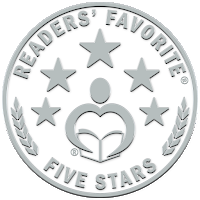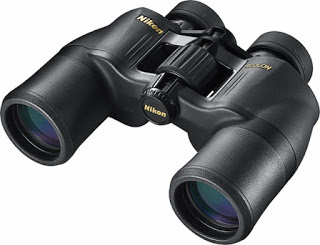Alex Pearl's Blog, page 2
September 10, 2019
rhubarbrhubarbrhubarb: This Amazon bestseller is now FREE on most popular...
rhubarbrhubarbrhubarb: This Amazon bestseller is now FREE on most popular...: Pick up your #FREE copy at Amazon US & UK: https://www. amazon.co.uk/dp/B00FK14Y74 https://www. amazon.com/Sleeping-Black birds-...
Published on September 10, 2019 02:45
February 12, 2019
This Amazon bestseller is now FREE on most popular e-platforms.

Pick up your #FREE copy at Amazon US & UK: https://www.amazon.co.uk/dp/B00FK14Y74 https://www.amazon.com/Sleeping-Blackbirds-Alex-Pearl-ebook/dp/B00FK14Y74/ref=cm_cr_arp_d_product_top?ie=UTF8 …Nook: https://www.barnesandnoble.com/w/sleeping-with-the-blackbirds-alex-pearl/1110414474 … itunes: https://itunes.apple.com/us/book/sleeping-with-the-blackbirds/id1170192548?mt=11 …
Kobo: https://www.kobo.com/es/en/ebook/sleeping-with-the-blackbirds-3?changeLanguage=True …and Smashwords: https://www.smashwords.com/books/view/676061 …
PLEASE NOTE: THIS PROMOTION IS FOR A LIMITED PERIOD ONLY.


Published on February 12, 2019 02:35
'Sleeping with the Blackbirds' by Alex Pearl is now FREE on most popular e-platforms.

Pick up your #FREE copy at Amazon US & UK: https://www.amazon.co.uk/dp/B00FK14Y74 https://www.amazon.com/Sleeping-Blackbirds-Alex-Pearl-ebook/dp/B00FK14Y74/ref=cm_cr_arp_d_product_top?ie=UTF8 …Nook: https://www.barnesandnoble.com/w/sleeping-with-the-blackbirds-alex-pearl/1110414474 … itunes: https://itunes.apple.com/us/book/sleeping-with-the-blackbirds/id1170192548?mt=11 …
Kobo: https://www.kobo.com/es/en/ebook/sleeping-with-the-blackbirds-3?changeLanguage=True …and Smashwords: https://www.smashwords.com/books/view/676061 …
PLEASE NOTE: THIS PROMOTION IS FOR A LIMITED PERIOD ONLY.


Published on February 12, 2019 02:35
November 21, 2018
It's arguably one of the most exciting and emotive products for advertisers to sell. But when was the last time you saw a great ad about money?
 I've been an advertising copywriter for more years than I'd comfortably own up to, and a good proportion of that time - perhaps 25% - has been devoted to the area of financial services. It's an arena known, not for its creativity, so much as its lack of it. It's one of those few sectors that for some curious reason, makes many copywriters go all weak at the knees at the prospect of taking a brief. Yet, we copywriters are always looking for angles on products and services that will enhance the customer’s life in some small way. And money, unlike so many other things in life, really can change our lives. Products like pensions and life assurance, for instance, offer the creative team incredibly powerful and emotive propositions to play with. After all, a yoghurt or chocolate bar can only do so much to make us feel good. A pension, on the other hand, will quite literally affect the quality of our lives for a good 20 years or more. And a life policy will pay for our wives, partners and kids to have a comfortable life, even if we’re not around to enjoy it with them. These are powerful, deeply profound and wholly tangible product benefits that should, one would have thought, lead to powerful and creative advertising campaigns. And yet there are so few memorable financial campaigns one can think of.
I've been an advertising copywriter for more years than I'd comfortably own up to, and a good proportion of that time - perhaps 25% - has been devoted to the area of financial services. It's an arena known, not for its creativity, so much as its lack of it. It's one of those few sectors that for some curious reason, makes many copywriters go all weak at the knees at the prospect of taking a brief. Yet, we copywriters are always looking for angles on products and services that will enhance the customer’s life in some small way. And money, unlike so many other things in life, really can change our lives. Products like pensions and life assurance, for instance, offer the creative team incredibly powerful and emotive propositions to play with. After all, a yoghurt or chocolate bar can only do so much to make us feel good. A pension, on the other hand, will quite literally affect the quality of our lives for a good 20 years or more. And a life policy will pay for our wives, partners and kids to have a comfortable life, even if we’re not around to enjoy it with them. These are powerful, deeply profound and wholly tangible product benefits that should, one would have thought, lead to powerful and creative advertising campaigns. And yet there are so few memorable financial campaigns one can think of.Banks have traditionally had sizeable marketing budgets with which to flog their wares, but the commercial that seems to be gracing our screens more than ever at the moment is a banal beach scene in which we see horses galloping through the waves choreographed to equally bland musak. The only attempt at any messaging is conveyed at the end with the words ‘By your side.’ This form of advertising is so devoid of any idea or meaning that you have to wonder what it is that Lloyds Bank is trying to achieve here, other than bringing their logo to life, and having hordes of mindless people adulating it for no apparent reason.
Barclays admittedly has been known to knock out the occasional good commercial. Their current online security commercial isn’t a bad effort. But you have to go back 18 years to see the famous ‘Big’ commercial featuring Anthony Hopkins, which delivered a simple chest-beating message with a certain panache and entirely excusable chutzpah.
The only other decent bank advertising I can recall was HSBC’s ‘The world’s local bank’campaign, which demonstrated the bank’s understanding of global markets with cleverly scripted vignettes of Western businessmen failing to understand the customs of foreign clients when abroad.
In the area of insurance and investment, one struggles even harder to think of good work. Back in the 80s a couple of good friends created a nice TV commercial for Legal & General about the very few investments that hadn't worked out for the company. One involved an oil rig in Mukluk, Alaska that drilled water, and carried the immortal line 'not much luck in Mukluk.' The end line was 'Only 99% certain of getting it right.' It was a brave commercial that gave L&G a human face and arguably made the company stand out from the dross.
Then, of course, there’s the Albany Life press campaign; easily the best press advertising campaign for a life company ever created. The irony is that Albany Life wasn’t a brilliant life assurance company despite its beautifully written and art directed press ads, and the company no longer exists.
Other notable financial advertising campaigns have included Egg, Commercial Union, More Than’s car driving dog, an intelligent press campaign for M&G and a series of well written press ads for Nationwide Building Society back in the ‘80s.
It represents such a tiny drop in a vast ocean of bland communications. So why is this? Personally, I think it’s almost certainly down to the inherent character of these organisations’ marketing departments that tend to err on the side of caution; and let's face it, most ads that do that are infinitely forgettable. From my own experience, most companies in the area of financial services take themselves far too seriously; refuse to let their advertising agencies convey messages that are in any way negative; and view humour as being wholly flippant and something that will denigrate the company’s brand values. There has also been a trend since the late 90s for financial services to pay heed to their design agencies more attentively than their advertsing agencies, which I have never really understood. But I suppose if I were to invest vast sums in a comprehensive set of design guidelines, I'd feel compelled to adhere to these guidelines rigidly and at all costs. The problem is, of course, that such guidelines are so compehensive that they tread on the toes of the advertising agencies by stipulating the brand's tone of voice.
At the end of the day, humour and negativity are, in my view, two of the most valuable weapons in the creative team’s armoury. Take them away and it’s possible to see how we end up with asinine commercials featuring galloping horses and straplines that say absolutely nothing.
Alex Pearl is the owner of Alex Pearl Ltd
Published on November 21, 2018 07:30
October 24, 2018
'First Man'��� - one man's journey into his own personal space
 I went to our wonderful local fleapit The Phoenix at the weekend with the scientist in the family, our son, to view 'First Man' directed by Damien Chazelle who gave us 'Whiplash' and 'La La land.'
I went to our wonderful local fleapit The Phoenix at the weekend with the scientist in the family, our son, to view 'First Man' directed by Damien Chazelle who gave us 'Whiplash' and 'La La land.'This is a far more ambitious movie in that it attempts to recreate the late 1960s - a challenging period of American history in which the US struggled with its foreign policy over Vietnam while also desperately trying to win the war with Russia over conquering space.
Against this backdrop, which Chazelle portrays with much authenticity, this film focuses not on the extraordinary human achievement and the triumph of a nation, so much as the rather solitary and moving journey of the narrative's chief achitect, Neil Armstrong.
Armstrong, by all accounts, was a fairly solitary and modest figure who, following his colossal achievement, shrugged off all publicity for a quiet life of academia. His own family described him as 'a reluctant hero.' And it's this side of the moon landing story that Chazelle chooses to show us. Unlike the brazen Buzz Aldrin (how could you not be brazen with a name like that?), Armstrong was a quiet, contemplative man who found it difficult to share his emotions - particularly following the tragic death of his young daughter from a brain tumour. He was the quiet kind of hero that we all like to gun for. But for him, going to the moon wasn't just a way for mankind to gain knowledge, it was a deeply personal and profound journey he felt compelled to make in order to make sense of his life.
Ryan Gosling plays a very credible and restrained Neil Armstrong while Claire Foy produces a very good performance as his wife who is desperately trying to hold the family together and smiling for the cameras, while her husband risks life and limb in the name of science.
This is an intelligent, well crafted film that attempts to throw light on America's 'reluctant hero.' And to a large degree, it succeeds in pulling it off.
Alex Pearl is a freelance writer and author of Sleeping with the Blackbirds
Published on October 24, 2018 12:28
'First Man' - one man's journey into his own personal space
 I went to our wonderful local fleapit The Phoenix at the weekend with the scientist in the family, our son, to view 'First Man' directed by Damien Chazelle who gave us 'Whiplash' and 'La La land.'
I went to our wonderful local fleapit The Phoenix at the weekend with the scientist in the family, our son, to view 'First Man' directed by Damien Chazelle who gave us 'Whiplash' and 'La La land.'This is a far more ambitious movie in that it attempts to recreate the late 1960s - a challenging period of American history in which the US struggled with its foreign policy over Vietnam while also desperately trying to win the war with Russia over conquering space.
Against this backdrop, which Chazelle portrays with much authenticity, this film focuses not on the extraordinary human achievement and the triumph of a nation, so much as the rather solitary and moving journey of the narrative's chief achitect, Neil Armstrong.
Armstrong, by all accounts, was a fairly solitary and modest figure who, following his colossal achievement, shrugged off all publicity for a quiet life of academia. His own family described him as 'a reluctant hero.' And it's this side of the moon landing story that Chazelle chooses to show us. Unlike the brazen Buzz Aldrin (how could you not be brazen with a name like that?), Armstrong was a quiet, contemplative man who found it difficult to share his emotions - particularly following the tragic death of his young daughter from a brain tumour. He was the quiet kind of hero that we all like to gun for. But for him, going to the moon wasn't just a way for mankind to gain knowledge, it was a deeply personal and profound journey he felt compelled to make in order to make sense of his life.
Ryan Gosling plays a very credible and restrained Neil Armstrong while Claire Foy produces a very good performance as his wife who is desperately trying to hold the family together and smiling for the cameras, while her husband risks life and limb in the name of science.
This is an intelligent, well crafted film that attempts to throw light on America's 'reluctant hero.' And to a large degree, it succeeds in pulling it off.
Alex Pearl is a freelance writer and author of Sleeping with the Blackbirds
Published on October 24, 2018 12:28
March 1, 2018
Chasing the Northern Lights with Tim Peake, Pete Lawrence, Jon Culshaw, Brian Cox, Donald Trump and the late Patrick Moore
 The last time I attempted to have a close encounter with the Northern Lights was back in 1990 when my brother and I decided to take a holiday together aboard a Norwegian cargo boat (the cargo being several tons of sardines). Setting sail from Bergen in our thermal underwear (it was March and pretty cold, after all), we were looking forward to the distinct possibility of viewing the Aurora from the ship's deck. What we hadn't quite realised was the fact that majestic fjords are not necessarily plain sailing - particularly at this time of year. This became patently clear on our first day at lunch when on taking our seats in the dining room, we couldn't help noticing that the tables and chairs had been ominously chained to the floor. The rubber place mats on which cutlery and glasses seemed to stick rigidly, were another pretty obvious clue. As our trip along the Norwegian coastline progressed, the motion of the boat slowly but surely began to imitate that of another vessel I had once boarded: the Pirate Ship at Alton Towers. One could just about handle the up and down motion, but once the side to side motion kicked in at the same time, I'm afraid most passengers headed swiftly (or at least as swiftly as one can go with all that movement going on) to the bathrooms located appropriately enough in the bowels of the ship. So when inevitably, the Northern Lights finally appeared to dance frenetically across the night sky, my brother and I had other more pressing engagements to attend to below deck.
The last time I attempted to have a close encounter with the Northern Lights was back in 1990 when my brother and I decided to take a holiday together aboard a Norwegian cargo boat (the cargo being several tons of sardines). Setting sail from Bergen in our thermal underwear (it was March and pretty cold, after all), we were looking forward to the distinct possibility of viewing the Aurora from the ship's deck. What we hadn't quite realised was the fact that majestic fjords are not necessarily plain sailing - particularly at this time of year. This became patently clear on our first day at lunch when on taking our seats in the dining room, we couldn't help noticing that the tables and chairs had been ominously chained to the floor. The rubber place mats on which cutlery and glasses seemed to stick rigidly, were another pretty obvious clue. As our trip along the Norwegian coastline progressed, the motion of the boat slowly but surely began to imitate that of another vessel I had once boarded: the Pirate Ship at Alton Towers. One could just about handle the up and down motion, but once the side to side motion kicked in at the same time, I'm afraid most passengers headed swiftly (or at least as swiftly as one can go with all that movement going on) to the bathrooms located appropriately enough in the bowels of the ship. So when inevitably, the Northern Lights finally appeared to dance frenetically across the night sky, my brother and I had other more pressing engagements to attend to below deck.It took another 30 years before I'd attempt to catch this illusive natural phenomenon for a second time. And on this occasion it was my wife who had noticed the ad for a trip aboard an Airbus to view the Aurora in the company of none other than Tim Peake, Pete Lawrence The Sky At Night presenter and Jon Culshaw the impressionist and keen astronomer. This special event was being organised as a fundraiser by Aerobility, a charity dedicated to giving those with terminal illnesses and disabilities of any kind, the opportunity to experience the liberating and exhilarating feeling of flying for themselves. It's a charity we know all too well, as Jennifer my wife is a wheelchair user and has taken to the skies several times with Aerobility. We applied there and then for seats for ourselves and our son. (Our daughter would have joined us but was flying to India that same day.) And within days our places had been confirmed, and the trip sold out. We were lucky.
On the day, we set off from home in NW London and arrived at Gatwick's plush Sofitel Hotel in time for a coffee and tea reception followed by introductions in the dining room. Mike Miller-Smith the CEO of Aerobility who is himself a wheelchair user, gave an emotional address about Aerobility's incredible work and played us a short film. We were then treated to a full explanation of the science behind the Aurora by Pete Lawrence, one of the TV presenters associated with The Sky at Night. Lawrence is not only a brilliantly informative speaker, but also witty. Getting your audience to laugh as well as learn is a gift; one Mr Lawrence possesses in spades. Having thoroughly whetted our appetite for this natural spectacle, we were then treated to another visual feast of impressive proportions: lunch. First course was a stunning representation of our solar system laid out in the form of miniature cheeses, an egg yolk and a selection of miniature pickled vegetables. I'm afraid to say I polished off the entire solar system with relish. It was quite delicious; as was the main course: roast beef and Yorkshire pudding alongside an assortment of artistically arranged vegetables. Following petit fours, the main treat of the day was served up with aplomb. Mr Tim Peake took to the podium like a duck to water. He is a natural speaker and his enthusiasm for his subject is pretty contagious. The atmosphere in that room for the next hour was virtually palpable. His account of his six months on the International Space Station was insightful and totally absorbing. He explained that what little spare time he had to himself, he spent taking photographs of earth from a viewing platform that constantly faced towards our planet. And then he proceeded to show us these remarkable high definition images, which were breathtakingly beautiful. The following 20 minutes was opened up to the floor as Mr Jon Culshaw took a microphone around the room and introduced questions from the floor in the voice of David Dimbleby. Everyone seemed to have questions, but thankfully the children were given priority. One child asked what the food was like on the ISS. Another asked him how he overcame his fears. And another wanted to know what scared him the most. To all these questions, Peake gave thoughtful and detailed answers. The food was rehydratable and could be heated up. And no, it wasn't particularly brilliant. But you just had to get used to it. As for his fears, he acknowledged that this was a very good question. His way of coping with his, was to focus wholeheartedly on his training. It was the only way he could really overcome them. His most scary experience was without any doubt his space walk outside the space station when no more than a single cable separated him from the security of the station and the all-embracing black infinity of outer space. Someone else beat me to a question I was itching to to ask; how long it would take in his view for a manned mission to Mars. He was fairly convinced that such a trip would realistically take place by 2030, but then added that it was also very feasible that the momentum now being created by Elon Musk and Spacex would bring that launch date forward.
The questions could have easily carried on for the entire afternoon, but we were under a tight schedule and it was now time to grab our boarding passes and passports and take the monorail to the exit gate for departure. I can honestly say that this is the first time I have ever heard the following announcement while boarding a plane: "Ladies and gentlemen, welcome to your British Airways flight to nowhere."
There were 140 passengers in total - around 20 or so of whom were wheelchair users and needed to be transferred onto a special narrow wheelchair to wheel down the aisle of the Airbus to then be carefully lifted and seated in their seat. This tricky operation was carried out with military precision and grace, and before we knew it, all 140 passengers were comfortably seated and being plied with refreshments. The cabin crew, by the way, were all volunteering their services free to the charity.
Once we were in the air, and had consumed our second meal of the day, all the cabin lights were turned off and all the illuminated seat belt signs were blacked out with black tape. It took around 15 minutes for your eyes to acclimatise to the dark. But of course, by doing so, you could enjoy a remarkable view of the stars. The only light was being given out by the moon, which was apparently particularly bright that night. And as we cruised at 30,000 feet above the clouds, we were treated to a commentary by Pete Lawrence who pointed out the stars and their constellations on both sides of the aircraft.
As we approached the coast of the Shetland Isles, the mysterious and very clear Aurora suddenly appeared above the horizon line as a very distinct band of light. According to Pete Lawrence who has wintnessed the phenomena more than 130 times, this wasn't a spectacular display, but it was certainly very visible. The chance of seeing the Northern \Lights from an aircraft are 50:50, so we certainly felt very priviledged to have done so.
So what exactly are the northern lights or aurora? The scientific definition is fairly technical and complex, so without wanting to speak another language, we can define these dancing and swirling lights as countless collisions of electrically charged particles spewed out by the sun into the earth's atmosphere. The lights can be best viewed above the magnetic poles of the northern and southern hemispheres. They are known as the Aurora borealis in the north and Aurora australis in the south.
As the aircraft turned for home, we were addressed by Mr Donald Trump, Professor Brian Cox, Carl Sagan and Patrick Moore - in the form of Mr Jon Culshaw. Though with the internal lights still very much off, the experience of hearing those voices in the dark only heightened Mr Culshaw's extraordinary ability to replicate the precise tone and inflexion of his subjects. It was, I have to say, the perfect ending to a long but very memorable day.
Our thanks go to Aerobility and British Airways for making such a remarkable trip possible, and, of course the cabin crew and our wonderful speakers. Finally our special thanks must go to Mr Tim Peake whose contribution and presence made this particular trip so very special for everyone.
Alex Pearl is a freelance writer and author of Sleeping with the Blackbirds Alex Pearl Ltd
Published on March 01, 2018 03:58
December 29, 2017
How to fatten up those investments.Tips from an Independent Financial Amateur.
 As a copywriter, I've probably written more ads and marketing pieces for investment companies over the years than I've had hot dinners (and, no I'm not living on sushi), and the one thing I've learnt as a result is that investing in companies is far from rocket science. In fact, it's nowhere near as complicated as the industry would have us believe. And I say this as a proud holder of a CSE grade four in Maths. Now, if I can get my head round investing in equities, believe me, anyone can. So before rushing off to pay an Independent Financial Adviser for guidance, take a piece of advice: your own.
As a copywriter, I've probably written more ads and marketing pieces for investment companies over the years than I've had hot dinners (and, no I'm not living on sushi), and the one thing I've learnt as a result is that investing in companies is far from rocket science. In fact, it's nowhere near as complicated as the industry would have us believe. And I say this as a proud holder of a CSE grade four in Maths. Now, if I can get my head round investing in equities, believe me, anyone can. So before rushing off to pay an Independent Financial Adviser for guidance, take a piece of advice: your own.Invest in stocks and shares without the shocks and scares
There are those who like to play the markets and deal directly in individual company shares. You may also see merit in juggling with fire and riding barrels down Niagara Falls for a bit of light entertainment. But most of us of a cautious disposition will steer clear of investing directly in company shares. But that's not to say we should avoid them altogether. Far from it. In fact, we have little choice but to invest in them if we don't want to see our hard earned savings languishing in retail savings accounts and gaining about as many pounds as Miley Cyrus on a health farm.
Instead of investing in individual shares, we can reduce the risk considerably by investing in baskets of shares managed by either fund managers or computers.
How many different kinds of funds are there?
In the UK the humble unit trust was first conceived in 1931 by M&G to emulate American mutual funds. The idea was primarily to spread risk by investing across a number of leading companies. These funds are referred to as open-ended funds because there is no limit to the number of shares known as units the fund can issue. And the value of these units will directly reflect the Net Asset Value of the underlying shares it holds. But this form of 'collective' or 'pooled' investment wasn't unheard of back in 1931. In fact, investment trusts had been around since 1868. But unlike unit trusts, these are listed companies in their own right. They invest in a number of other companies' shares, and issue a finite number of its own shares - so the price of these are determined not by the underlying value of the various company shares it holds but by the demand for its stock on the open market. When the Net Asset Value is higher than its market valuation, investment trusts trade at a 'discount' and from the investor's point-of-view this is clearly a good thing as the trust is deemed to represent particularly good value.
In 1996 the unpleasantly named Open Ended Investment Company (OEIC pronounced 'oik') was introduced in the UK. This was a form of open ended-ended fund like a unit trust, but had a simpler and more transparent cost structure than its cousin, which operated a bidding and asking price.In addition, the legal structure of an OEIC allowed it to invest in a wider range of companies. As a result, many unit trusts have converted to OEICs.
So which funds should you invest in?
There are literally thousands of funds now available to invest in. They are managed by a plethora of investment houses and banks, and occupy different geographical and investment sectors like the Far East, UK Income and International Growth.
The only way to judge performance is to look at past performance. This doesn't obviously guarantee future performance (as the legal text always reminds us) but it does give us a pretty good indication - particularly if the long-term track record stacks up. These figures are readily available both online and in print. Morningstar is a good independent online source for fund data.
The other important point you need to know is that there are essentially two types of funds you can invest in: actively managed ones and passive tracker or index funds. As the name suggests, actively managed funds are managed by a fund manager and a team of researchers. They will constantly review the market and the companies they invest in, and the cost of this service is passed on in the form of an ongoing annual management fee. Typically, this could be around 1% of the total sum invested. Tracker funds, on the other hand, are run by a computer program and aim to reflect the average performance of a particular index. The cost of managing tracker funds will be relatively low, and the ongoing charges should reflect this.
To cut to the chase, there are four funds I would readily recommend to anyone now looking for a sound long-term home for their investment within the shelter of an ISA. Two are actively managed, and two are tracker funds.
Terry Smith is the co-founder of Fundsmith LLP and launched the Fundsmith Equity Fund in 2010. Since inception the fund, which is an OEIC, has grown by 256.3%, which amounts to an annualised return of 19.7%. Fundsmith is unusual in that it only manages three funds. Most investment houses manage a broad range of funds.You can learn more about Fundsmith by visiting the Morningstar independent analysis page here. As an actively managed fund you pay 1.05% in ongoing annual charges.
My second choice of actively managed funds has to be the Henderson China Opportunities Fund, an OEIC managed by Charlie Awdry. Awdry has a great deal of experience in this market and the fund has performed very well. Over the past ten years, it has produced an annualised return of 8.19%. But China's recent economic surge is now looking relentless, and most economists confidently predict that she will overtake the US as the world's largest economy. Bloomberg reckons on current figures and trends that the US will be knocked into second place by China as early as 2032. And the performance of Henderson's China Opportunities Fund reflects this advance. Over the past three years the fund has produced an annualised return of 21.81%. The ongoing annual charges of 1.75%; are admittedly relatively hefty, but it's probably well worth paying if you are looking to invest for at least five years.
I've long been a big fan of tracker funds that simply track an index by investing in a wide range of companies to replicate the average price of a sector. And there are three reasons for my enthusiasm. First of all, the ongoing costs of investing are (or should be) relatively low. There are no fund managers and researchers to pay, as the fund is managed by a computer program. Secondly, there is a certain level of certainty that you will receive the average or close to the average return. Bearing in mind that the majority of actively managed funds achieve a below average return, this shouldn't be underestimated. Lastly but no less significantly, you don't have to worry about the fund manager leaving, as there isn't one.
There are several tracker funds on the market, but in my view the best established and most reliable are run by Legal & General. Their Global Technology Index Fund has produced exceptional returns. Over ten years it has produced an annualised return of 13.26%. The ongoing annual costs amount to 0.95%. Alternatively, its International Index Trust has produced an annualised return of 15.38% over three years, and its ongoing annual costs amount to 0.85%.
What about Brexit?
It was recently widely reported that John Redwood, the arch Brexiteer had advised investors to pull out of UK equities in the light of Brexit and the resulting uncertainty it will continue to foster in the short-term. It's a stance many stockbrokers are now taking, and for good reason. Hargreaves Lansdown, the UK's largest online fund provider has adopted a more bullish position, but they do seem to be the exception. Personally, I would certainly advise anyone with funds that were heavily weighted with UK investments to seriously consider switching to international funds with little or no UK holdings. And it's for this reason that I have not recommended the Legal & General UK Index Trust, one of the best value index funds on the market with ongoing charges of just 0.10%.
Where do you start?
There are now many online fund providers to choose from, with Hargreaves Lansdown being the largest, and possibly the most comprehensive. This said, they are not the cheapest. If your portfolio doesn't exceed £250,000, the best value investment platform is currently Cavendish Online whose annual charge is 0.25% as opposed to Hargreaves Lansdown's 0.45%.
A word of caution.
If you are not prepared to invest for at least five years without accessing your investment, you shouldn't be investing in equities. All market investments rise and fall on a regular basis. It is only over the long-term that funds come into their own. A cautious approach adopted by many is to invest regularly every month. Known as pound cost averaging, it's a good way to smooth out the peaks and troughs of an investment by spreading your investment over time.
Alex Pearl is an author and freelance copywriter at Alex Pearl Ltd
Published on December 29, 2017 07:09
August 29, 2017
A haven for those with life-threatening conditions
 For the past few years, holidays have become something of a challenge for my wife and I. I should explain that five years ago, my wife was diagnosed with a spinal tumour. The good news was that it was benign; the bad news was that it was inoperable, and was a regressive condition.
For the past few years, holidays have become something of a challenge for my wife and I. I should explain that five years ago, my wife was diagnosed with a spinal tumour. The good news was that it was benign; the bad news was that it was inoperable, and was a regressive condition.Five years on and my wife is now confined to an electric wheelchair and has to sleep in an electric profiling bed.
As a result, any hotels or holiday cottages we stay in must have ample space, accessibility, cavernous wet-rooms and, of course, a profiling bed. Finding suitable accommodation that can tick all these boxes is by no means an easy task. To date, we have only discovered one self-catering location that works well and is one we like. Disabled-friendly Cottages in Norfolk have a number of wheelchair-friendly cottages situated in a pretty location with good views over the rolling Norfolk countryside. We have stayed in the Little Workshop several times. It's spacious, comfortable and works well for us. You can view the website here.
There are plenty of properties in the UK that advertise themselves as wheelchair-friendly, but from our experience, many aren't really as spacious as you'd like them to be, and the vast majority aren't in the most salubrious surroundings. Indeed, one cottage we stayed in a year ago was very cramped and located on a particularly soulless and unattractive housing estate.
As far as hotels go, there really is only one that works for us.
On first learning about The Grove in Bournemouth, I was admittedly somewhat sceptical. The Grove is, after all, run by MacMillan as a special hotel for people with life-threatening conditions. So I had visions of a nursing home with vinyl flooring, the smell of disinfectant and an air of deep depression about it. So having packed our specially adapted Citroen Belingo with all the paraphernalia such a holiday requires, I set off full of trepidation and dread.
On arriving at The Grove, my preconceived ideas were dispelled in the twinkling of an eye. The Grove has the air of a quality country house hotel, and its staff are attentive and friendly. Indeed, on climbing out of the car, someone immediately appeared and insisted on taking all our bags.
We had booked room 7, which is a very large well furnished room with plenty of wardrobe and desk space and a concealed fridge. Needless to say, there is a TV and tea, coffee and biscuits. There are also two comfortable electric operated armchairs. The wet-room is vast and comes equipped with a drying machine that effectively dries you after a shower. There is even an attractive view over the well manicured garden.
The meals prepared by the chef are also of an equally high standard. I always judge the culinary standards of such establishments by the quality of the breakfast. The Grove scored top marks in this respect. My scrambled eggs were cooked to perfection; both light and fluffy; and my sausage, bacon, mushrooms and tomatoes were also beautifully cooked and served, and not the least bit greasy. So I wasn't surprised by the high quality of the evening meals, which were delicious and beautifully served.
The staff couldn't be nicer if they tried.
Leaving this place is a bit like leaving good friends who have done their utmost to make your stay an incredibly pleasant and relaxing one. The Grove is more than a hotel; it is a very special place indeed.
Alex Pearl is author of Sleeping with the Blackbirds
Published on August 29, 2017 15:44
August 23, 2017
A great tool for finding email addresses
 Having set up our own lean, cost-effective advertising agency Mac & Pearl to service the needs of the luxury sector, my colleague and I found ourselves drawing up an exhaustive list of potential clients and creating presentations to said clients. All that remained was to get our hands on a reliable and up-to-date mailing list.
Having set up our own lean, cost-effective advertising agency Mac & Pearl to service the needs of the luxury sector, my colleague and I found ourselves drawing up an exhaustive list of potential clients and creating presentations to said clients. All that remained was to get our hands on a reliable and up-to-date mailing list.Such lists are readily available but can be expensive, and because marketing is by its very nature an incestuous business, these lists can be completely out of date by the time you receive them.
So instead of forking out around $600 for around 2,000 contacts I opted instead to try out a website entitled getemail.io According to their website, the company uses big data and machine learning algorithms to find email addresses of any professional in seconds. But don't let the techno-speak send a cold sweat down the back of your neck, because the fact of the matter is this service is not only easy to use, but also seems to work pretty well.
Here's how it works. You simply register with getemail for free and receive up to 50 free emails per month. The service works through Linkedin, so once you have registered, a green GET EMAIL button magically appears on any Linkedin profiles you view. Click on the button and you'll get one of three possible responses. In many instances, the email address will appear instantly. Alternatively, you will be asked to click another button to verify one of several possible addresses. This will take a couple of minutes, at the end of which you will receive a verified email or one that can't be found. On the whole most emails are in fact located, and are accurate. None seemed to bounce back. In fact, I noticed that one of the contacts on my list changed her surname and email address overnight (presumably because she had just got married) - and this showed up on the system because people generally keep their status on Linkedin bang up-to-date.
If, of course, you want to get your hands on more than 50 free email addresses per month, you can sign up to receive more - anything from 300 to 10,000 a month for $49 or $399 respectively.
So if like us, you are a small business looking for prospects, getemail.io should be your first port of call.
Alex Pearl is author of Sleeping with the Blackbirds
Published on August 23, 2017 10:30



